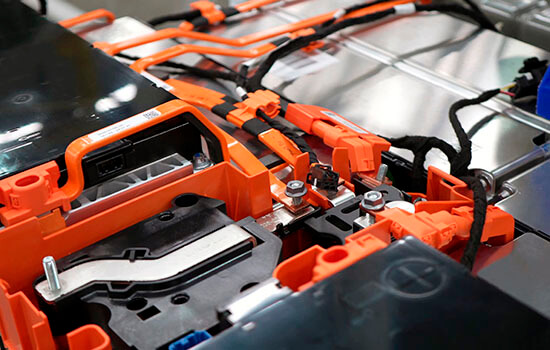Manufacturing on the Ropes? – Econbrowser

Report on Manufacturing Sector Trends and Sustainable Development Goal (SDG) Implications
Executive Summary of Key Economic Indicators
An analysis of recent data reveals a downturn in the manufacturing sector’s performance since March 2025. These trends present significant challenges to the achievement of key Sustainable Development Goals (SDGs), particularly those related to economic growth, employment, and sustainable industrialization.
- Employment and Labor: Manufacturing employment and aggregate work hours have experienced a consistent decline since March 2025.
- Production and Value Added: The Federal Reserve’s index for manufacturing production has remained flat, indicating stagnation. Similarly, real value added in the sector has shown no significant growth in the last two quarters.
- Capacity Utilization: The rate of manufacturing capacity utilization has also decreased, suggesting underuse of existing industrial infrastructure.
Analysis in the Context of SDG 8: Decent Work and Economic Growth
The observed trends directly impact the progress towards SDG 8, which aims to promote sustained, inclusive, and sustainable economic growth, full and productive employment, and decent work for all.
- Target 8.2 (Economic Productivity): The stagnation in manufacturing production and real value added signifies a slowdown in economic productivity. This trend moves away from the goal of achieving higher levels of productivity through diversification and technological upgrading.
- Target 8.5 (Full and Productive Employment): The decline in both manufacturing employment and aggregate hours represents a direct setback to achieving full and productive employment and decent work for all. This contraction reduces job opportunities and threatens the livelihoods dependent on the industrial sector.
Implications for SDG 9: Industry, Innovation, and Infrastructure
The health of the manufacturing sector is central to SDG 9, which focuses on building resilient infrastructure, promoting inclusive and sustainable industrialization, and fostering innovation.
- Sustainable Industrialization (Target 9.2): The combination of flat production and falling capacity utilization undermines the goal of promoting inclusive and sustainable industrialization. A weakening manufacturing base is less capable of increasing its share of employment and gross domestic product, a key objective of this target.
- Resource-Use Efficiency: Declining capacity utilization points to an inefficient use of industrial assets. This is contrary to the principles of SDG 9 and SDG 12 (Responsible Consumption and Production), which advocate for the efficient use of resources and infrastructure.
Forward-Looking Analysis and Global Partnership Concerns (SDG 17)
Backward-looking data is supplemented by forward-looking indicators that suggest continued challenges. The broader economic context, including trade policy, poses risks to global cooperation essential for the SDGs.
- Future Outlook: The Institute for Supply Management (ISM) Manufacturing PMI, especially the new orders component, indicates a pessimistic outlook and suggests a potential for future contraction, further imperiling progress on SDGs 8 and 9.
- Impact on SDG 17 (Partnerships for the Goals): The report notes these negative trends are occurring before the full effects of new tariffs and international retaliation are felt. Such trade disputes threaten to disrupt global supply chains and undermine the stable, rules-based multilateral trading system that is a cornerstone of SDG 17, hindering the global partnership for sustainable development.
Analysis of Sustainable Development Goals (SDGs) in the Article
1. Which SDGs are addressed or connected to the issues highlighted in the article?
SDG 8: Decent Work and Economic Growth
- The article directly addresses economic performance and employment, which are central to SDG 8. It discusses key metrics such as “manufacturing employment,” “aggregate hours,” and “real value added in manufacturing,” all of which are fundamental components of economic growth and the state of the labor market. The decline in employment and hours worked points to challenges in achieving decent work and sustained economic growth.
SDG 9: Industry, Innovation and Infrastructure
- This goal is relevant as the article’s entire focus is on the manufacturing sector. It analyzes the health of this industry through indicators like “manufacturing production,” “capacity utilization,” and “real value added.” These metrics are used to assess the state of industrialization, a core component of SDG 9. The mention of tariffs also relates to the policy environment affecting industrial sectors.
2. What specific targets under those SDGs can be identified based on the article’s content?
SDG 8: Decent Work and Economic Growth
- Target 8.1: Sustain per capita economic growth. The article tracks “manufacturing production” and “real value added in manufacturing,” which are key components of a country’s overall economic output and Gross Domestic Product (GDP). The observation that value added has been “essentially flat” directly relates to the goal of sustaining economic growth.
- Target 8.2: Achieve higher levels of economic productivity. The article’s analysis of “manufacturing production,” “capacity utilization,” and “value added” serves as a measure of economic productivity within a key sector. A decline or stagnation in these areas, as suggested by the article, indicates a challenge to achieving this target.
- Target 8.5: Achieve full and productive employment and decent work for all. The article explicitly reports that “manufacturing employment” and “hours” are down. These are direct measures related to achieving full and productive employment.
SDG 9: Industry, Innovation and Infrastructure
- Target 9.2: Promote inclusive and sustainable industrialization and, by 2030, significantly raise industry’s share of employment and gross domestic product. The article is a direct assessment of this target’s components. It measures “manufacturing employment” and “real value added in manufacturing” (a proxy for the industry’s contribution to GDP). The downward trend in employment and flat value added run contrary to the aim of this target.
3. Are there any indicators mentioned or implied in the article that can be used to measure progress towards the identified targets?
For SDG 8 Targets:
- Manufacturing employment: Mentioned as being “down since March 2025,” this is a direct indicator for Target 8.5 (full and productive employment). It is a component of the official indicator 9.2.2 (Manufacturing employment as a proportion of total employment).
- Aggregate hours: Also reported as “down,” this indicator measures the volume of work available, relating to Target 8.5. It provides more detail than just employment numbers.
- Real value added in manufacturing: The article notes this has been “essentially flat.” This serves as a proxy for official indicator 8.1.1 (Annual growth rate of real GDP per capita) and indicator 9.2.1 (Manufacturing value added as a proportion of GDP), measuring economic growth and productivity (Targets 8.1, 8.2).
- Manufacturing production (Fed index): Stated as “flat since March,” this is another key indicator of economic output and productivity, relevant to Targets 8.1 and 8.2.
For SDG 9 Targets:
- Manufacturing capacity utilization: The article shows this indicator is “down.” It measures how much of the industrial capacity is being used, which is a key metric for assessing the health and sustainability of industrialization under Target 9.2.
- ISM manufacturing PMI – new orders component: Described as not “too promising,” this is a forward-looking indicator that helps predict future manufacturing activity, production, and employment, making it relevant for monitoring progress towards Targets 8.2 and 9.2.
4. Summary Table of SDGs, Targets, and Indicators
| SDGs | Targets | Indicators Identified in the Article |
|---|---|---|
| SDG 8: Decent Work and Economic Growth |
8.1: Sustain per capita economic growth.
8.2: Achieve higher levels of economic productivity. 8.5: Achieve full and productive employment and decent work for all. |
|
| SDG 9: Industry, Innovation and Infrastructure | 9.2: Promote inclusive and sustainable industrialization and significantly raise industry’s share of employment and GDP. |
|
Source: econbrowser.com

What is Your Reaction?
 Like
0
Like
0
 Dislike
0
Dislike
0
 Love
0
Love
0
 Funny
0
Funny
0
 Angry
0
Angry
0
 Sad
0
Sad
0
 Wow
0
Wow
0


-1920w.png?#)






































































